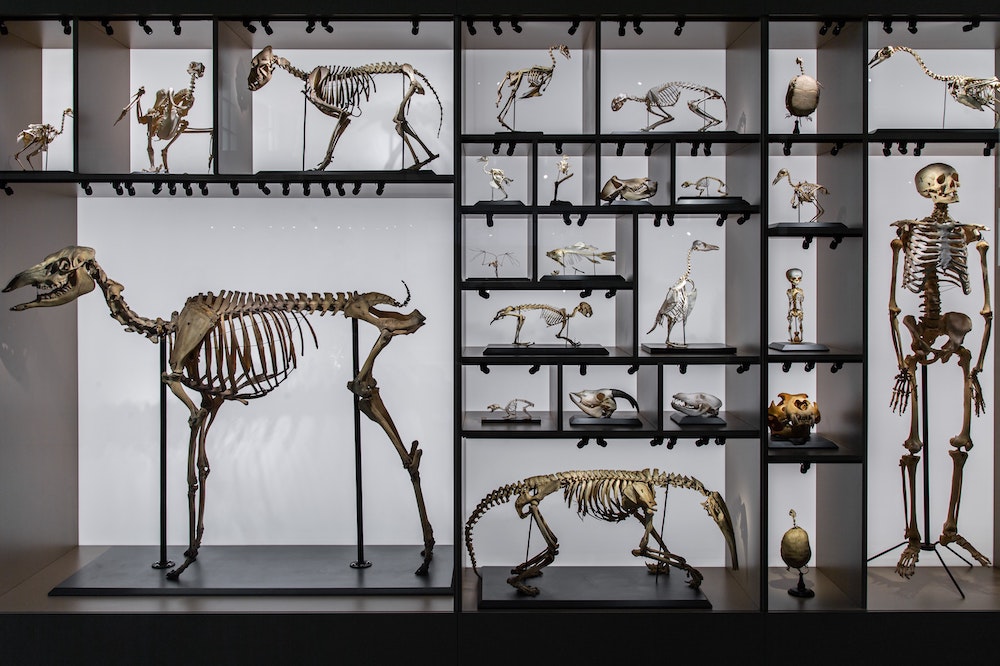Who Invented Walking?
Who invented walking? It's something we take for granted with our own movement but it was millions of years in the making
This article is more than 2 years old

We do it every day. From the time we wake up and get out of our beds to the time the night ends and we lay our sleepy heads down for what we hope will be a good night’s rest. What is it that we do? Well, we walk. Of course, some of us sit in an office chair for a good portion of the day, but otherwise, we walk. Some of us do it faster than others, and some of us like to take our time. Some of us like to do it in the mountains, some of us prefer to do it on a sandy beach. But the one thing we have in common, no matter where we are, is that we walk. So, who invented walking? How did it start?
WHO INVENTED WALKING? LET’S START WITH BIPEDALISM

Believe it or not, but there was a time when walking on two feet simply never happened. Yes, this was millions of years ago, but it is a fact that our primate ancestors used all four limbs to get around and if they had to stand on their hind haunches, it was for a specific reason, but not for any long-term walking.
Bipedalism – walking, jogging, or running on two feet – was not an overnight success when it comes to locomotion. Even today, you can look around the animal kingdom and see that most use the four feet they were given, and in rare occurrences (monkeys, sometimes bears) they do go up on two feet. For humans, we’ve been doing this for approximately the past 1.9 million years. Before that, it was four limbs.
So, how exactly do scientists know that it was 1.9 million years ago that man and woman began their bipedal adventures? Well, anthropologists can determine this by the shape of our ancestors’ bones and just how they fit together. From that, they can tell how bodies moved and, more importantly, if they were standing upright when they did move. This narrows down the “who” in who invented walking.
ARDIPITHECUS RAMIDUS
Back in 1994, anthropologists in Ethiopia discovered fossils from an unknown hominin. As the fossils were being put together, they discovered that this hominin was an adult female, Ardipithecus ramidus which they lovingly called Ardi. Over the next decade, these anthropologists found over a hundred fossils from Ardi’s species. When all was said and done, they were dated to be from 4.2 million to 4.4 million years old.
But what made this new species interesting was that they were dated so far back and were shown to have certain characteristics that were unexpected. The foot of this species had shown a structure that allowed for the exact toe push-off that we humans have today. This push-off is not seen in four-legged apes. To scientists, this is an indication of bipedalism. Was Ardi who invented walking?
Another thing they found with Ardi was the shape and the position of the pelvic bones as well as how the legs were set beneath the pelvic bones. All of this, plus how the leg bones fit neatly together suggested that Ardi and her clan all could walk upright. Now, this doesn’t suggest that Ardi and her family were complete upright walkers back in their day, but it does seem to show that some form of bipedalism was present at least 4.4 million years ago.
LUCY IN THE SKY WITH DIAMONDS
Before Ardi came to be known, anthropologists had already completed around 40 percent of a hominin skeleton that was living around a million years after Ardi. This skeleton was also found in Ethiopia and because it was vastly similar to many of the other fossils found in eastern and southern Africa, it was called Australopithecus afarensis. In Latin, this translates to “southern ape from the afar region.” They discovered that this species was female, so they decided to name her Lucy, the name which they took from the popular Beatles song.
Upon Lucy’s discovery, they saw she had a partial, yet well-preserved, pelvis. This is how they knew the fossil was female. They also noted that Lucy’s pelvis and upper leg bones fit in such a way that it was apparent that she walked upright on her two feet. While they did not find any bone feet of Lucy’s, later discoveries of Lucy’s people did include feet fossils that indicated bipedal walking. Was it Lucy in the Sky with Diamonds’ group who invented walking?
Another piece of remarkable Lucy evidence was found that showed just how Lucy’s friends and family moved around. Under a layer of 3.6-million-year-old volcanic ash in Tanzania, anthropologists actually found some fossilized footprints that presented themselves in what was once a wet surface of volcanic ash. These footprints traverse nearly 100 feet. Of the 70 or so individual footprints discovered, it was determined they were made by at least three individuals who were walking upright on both feet.
While the tracks were proof positive that Lucy and pals were walking on two feet, their gait was much different from our very own. Regardless of that fact, the findings do show evidence of bipedalism some 3.5 million years ago. Again, though, is this who we think invented walking?
HOMO ERECTUS

As the years rolled on, and by years we mean millions of years, our ancestor’s bodies grew differently. By 1.9 million years ago, they were seen to have evolved to now possessing angled femurs, much stronger knees, and a curved spine to go along with more hip support that allowed them to become fully bipedal and walk upright. The longer femurs that Homo erectus owned allowed our ancestors to take much longer strides and walk at a faster pace. Not only that, but the Homo erectus also had shorter arms that would help make it possible for our ancestors to run and move around the Earth much like we do today.
One more thing anthropologists found important in Homo erectus had nothing to do with pelvic bones, or longer femurs and short arms. This, instead, had to do with the head. It was determined that the Homo erectus had a much larger brain than earlier bipedal ancestors and this gave them the know-how in making stone tools that we call Acheulean implements.
Although we have plenty of evidence that early ancestors did show the ability to walk upright over 4.4 million years ago, the ancestors who most closely resemble us today are the Homo erectus. Yes, it took millions of years to get to that point, but it is a point we needed to for a variety of reasons. At least we think so.
WHY WAS WALKING INVENTED?

Now we know who invented walking, should we then ask, why? There has never been one definitive answer as to why hominids began to walk on two feet, but there has been plenty of conjecture. Some say it was perhaps the need to better see predators. Standing upright has that effect, plus, it gave them the ability to run. Another thought was that as the environment changed, there were fewer and fewer trees to climb, so standing and walking upright became a necessity.
One study that was conducted with chimpanzees and was published in 2012 talks of a test given to the chimps where they had a choice between coula nuts and oil palm nuts. Although these chimps lived in an oil palm nut dense area, they preferred the coula nuts. When the chimps were given the coula nuts, scientists say that they were four times more likely to walk away on their back two limbs. Scientists then concluded that the chimps would take the coula nuts somewhere else to avoid competition and that walking upright we the fastest and best option for them.
One last thought centered around the ability of hominids to use their hands. True, bipedalism came well before toolmaking was vogue, but being able to stand upright freed hands to make and eventually use tools. Of course, this is a hallmark of what humans do today.



